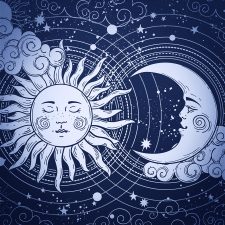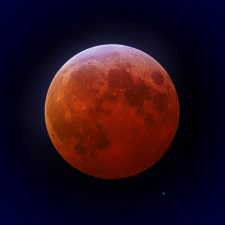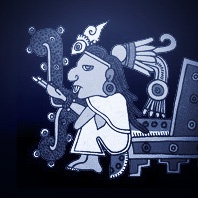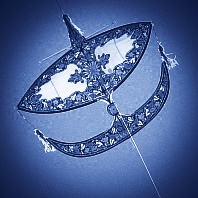The words “full moon” in many languages

It is said that there are more than 6,000 languages worldwide (this is hard to imagine) and it is a fascinating concept to think, there are probably as many words for “full moon”.
Here we begin our little journey to the full moon. A few words about the fascinating quest of the greater purpose, that includes the full moon circulating through our lives. In layman’s terms and not always scientific (astronomy experts – don’t look too closely!). We would like to wish you illuminating moments. Enjoy!


It is said that there are more than 6,000 languages worldwide (this is hard to imagine) and it is a fascinating concept to think, there are probably as many words for “full moon”.

A full moon is when the Sun and the Moon are facing opposite, being in opposite direction from an Earth perspective.
This might feel astonishing if one imagines that the Moon is on one side, the Sun on the other and the Earth in between? Shouldn’t the Earth throw a shadow onto the Moon? Bingo – this is exactly what she does! But only when the Moon is exactly on the Earth orbit, the so called “ecliptic”. When this takes place, we speak of a lunar eclipse!

The Moon needs 27.33 days to circle around the Earth. Something that is also referred to as “sidereal time”. But because the Earth orbits the Sun, just like the Moon orbits the Earth, the Moon has to travel two further days in order to resume the same position to the Earth and Sun. This is then called the “sidereal time”. In order to determine the point of time of the reoccurring full moon, the sidereal time serves as basis.

We already know now that the moon month is mostly shorter than the calendar month, being on average approximately 29.5 days. If full moon falls on the first or second of a month, it is possible that another full moon occurs in the same month, for instance in July 2004:
Friday, 2 July 2004, 01:08:54 pm
Saturday, 31 July 2004, 08:05:06 pm
This event is also known as “blue moon”.

The answer is: “everywhere at the same time”. This refers to the so called Universal Time (UT) though, which is used for general astronomical events. We have already learnt that full moon is an astronomical event, where the moon, sun and the earth play a role by being in a specific position. So, full moon takes place at a specific time in the outer space. This point of time is specified by astronomers namely by the Universal Time.

There are multiple ways of approaching this question. If we look at it from a purely theoretical standpoint, we might be tempted to say that the full moon is infinitely short, since the phases of the moon are changing continuously. The moon is not yet quite full shortly before the full moon, and is already waning shortly afterwards.
However, there is a practical aspect that lets us quantify the full moon as a finite and measurable span of time: Since the Sun is significantly bigger than the Moon, its rays are able to reach just a little over half of the Moon’s surface. This means that the timespan in which the visible side of the Moon’s surface is irradiated (as seen from Earth) is longer than infinitely short.

Whether scientists, astrologers or esoterics, they agree on one thing: the moon influences earth and life on earth. For instance, it regulates the tides through its magnetism. Also continents feel the consequence of this magnetism and either raise or lower their position sometimes up to 26 cm.

In nature it is a known fact: for some animal species, mating takes place at full moon. However, the examples that can be found on this subject are rather simple. Full moon serves in some cases indirectly as the cause (for instance through the high water levels during the tides that the horseshoe crab uses to deposit its eggs) or also as the signal for both sexes of a species to begin at the exact same time to safeguard their future existence (a particular type of fly or also corals). It is understood that also wolves are led by full moon when it is time to mate.

… that people are looking for an argument at full moon or are especially happy …
… that if full moon is surrounded by a haze, a person dies …
… that you raise your hat three times to the moon (being a man) or you make a curtsey (being a woman), in order to protect yourself from misfortune until the next full moon …
… that whoever does not chink glasses with full moon at least once, does not deserve any happiness [Greek toast] …

During a lunar eclipse, the Moon moves through the shadow of the Earth. Which means, that the Earth is positioned quite exactly between the Sun and Moon and casts its shadow onto the Moon. This is only possible at full moon and if some other requirements are met. Depending on whether the moon passes the partial or the core shadow of the Earth, we speak of a partial or total lunar eclipse.

The end of August 2012 will bring another »blue moon«. This is what you call the second full moon within a month. It happens from time to time, because the lunar cycle is shorter, with its averaging 29.5 days, than the normal calendar month. Just like in August of this year, with a full moon on 02.08. and one on 31.08.2012. We have already described here why this double full moon is called »blue moon«.

The new moon is the opposite pole to the full moon, being the time when the Moon is not visible in the sky to us people. Maybe this is why we pay less attention to it, because what you don’t see is less prevalent in our awareness.
However, there is one aspect, which continues to lend significance and fascination to the new moon. It is the word »new« and the described moment of renewal and of a new beginning. This word can be found in different languages:

The Aztec were indigenous people (natives), who lived in Central America between the 14th and 16th century, in the area of today’s Mexico. Just like all primordial nations, they had a variety of deities and Tecciztecatl is the god of the moon. Many stories about the Aztec have been passed on, most of them appear sinister and cruel. Also their ending, precipitated by the Spanish conquerors, was bloody and does not belong to the chapters man can boast about. And so, you look to the past with split feelings.

Potassium, aluminium, silicon, oxygen and some other ingredients result in a mineral in a certain compound, which has received the name moonstone due to its whitish, shimmering glow. This stone has already been known in old cultures. The Romans viewed it as solidified rays of the Moon, the old Greek connected it to the moon goddess Selene.

The word “aggression” derives from the Latin verb “aggredi” which means »approach, attack«. This is interesting, because it does not only contain a destructive energy, but also a proceeding, solution-oriented energy. We also speak of tackling problems or approaching a task. During the course of the centuries, the component of attacking and destroying appears to have become dominant, so much so, that we judge aggression nowadays negatively and see the result to be destruction, violence and war. It is easily understandable now, why people are having such a difficult time to deal naturally with their aggressions that they express or restrain. We have put a negative mark on it. And we neither want to carry something negative inside us, nor do we want to voice it.

As already mentioned before, the Moon assumes a special status in Asia as well. There are a few important festivals, which are closely connected to the Moon, like for example the Moon Festival and the Lantern Festival in China, or many celebrations in Buddhism and Hinduism.
In Malaysia, in South East Asia, there is a traditional kite called »wau bulan«, whereas »wau« stands for kite and »bulan« for the Moon. The kite got its name because of its moon crescent-shaped lower part. When you fly this kite, it supposed to remind of the rising Moon.

Lions mostly hunt in the dark, as predators have more of an advantage if it is as dark as possible. Hence, the moonlight is a disturbing factor, because it makes the predators easily detectable by their prey. And when the full moon is actually in the sky, it then so happens, that the lions occasionally come away empty-handed. Thus commences a time at full moon (and shortly before), where the lions begin to starve and hence their urge to hunt increases.

Although, one could assume that the following concerns vampires or werewolves, we occupy ourselves with another kind of bite, namely the bite of animals to humans. There is a study of the E.R. department of the Bradford Royal Infirmatory in Bradford, England from 1997–1999. Here, the question, whether animals bite more often at the full moon, has been investigated. 1,621 patients were looked at, who had been treated for animal bites. The majority of affected patients had been bitten by dogs (95.1 %), others by cats (3.4 %), horses (0.8%) and rats (0.7 %). The surprising aspect of this study is, that indeed a significant connections could be detected between the full moon happenings and the animal bites. Hence, this should be the first study, known to us, which provides such a result!

»The Lion King« from 1994, is one of the most successful animated movies, and just like in other works from the house of Walt Disney (»The Lady and the Tramp« and others), we are able to gaze at the full moon up in the sky in nightly scenes.
Particularly well-known is the image, where Simba dances across a tree trunk with his companions, which enables them to cross a large river in front of the backdrop of a gigantic full moon. This motif has also been used for various movie posters and can also be watched in the movie trailer:

We are tapping again into the treasure chest of Old English stories and have come across the fairy tale »The Buried Moon« or »The Dead Moon«. This piece was published by the Australian historian Joseph Jacobs in 1894, as part of a fairy tale collection, but its origin lies much further back like so many folktales, and has been passed down by word of mouth over the centuries.